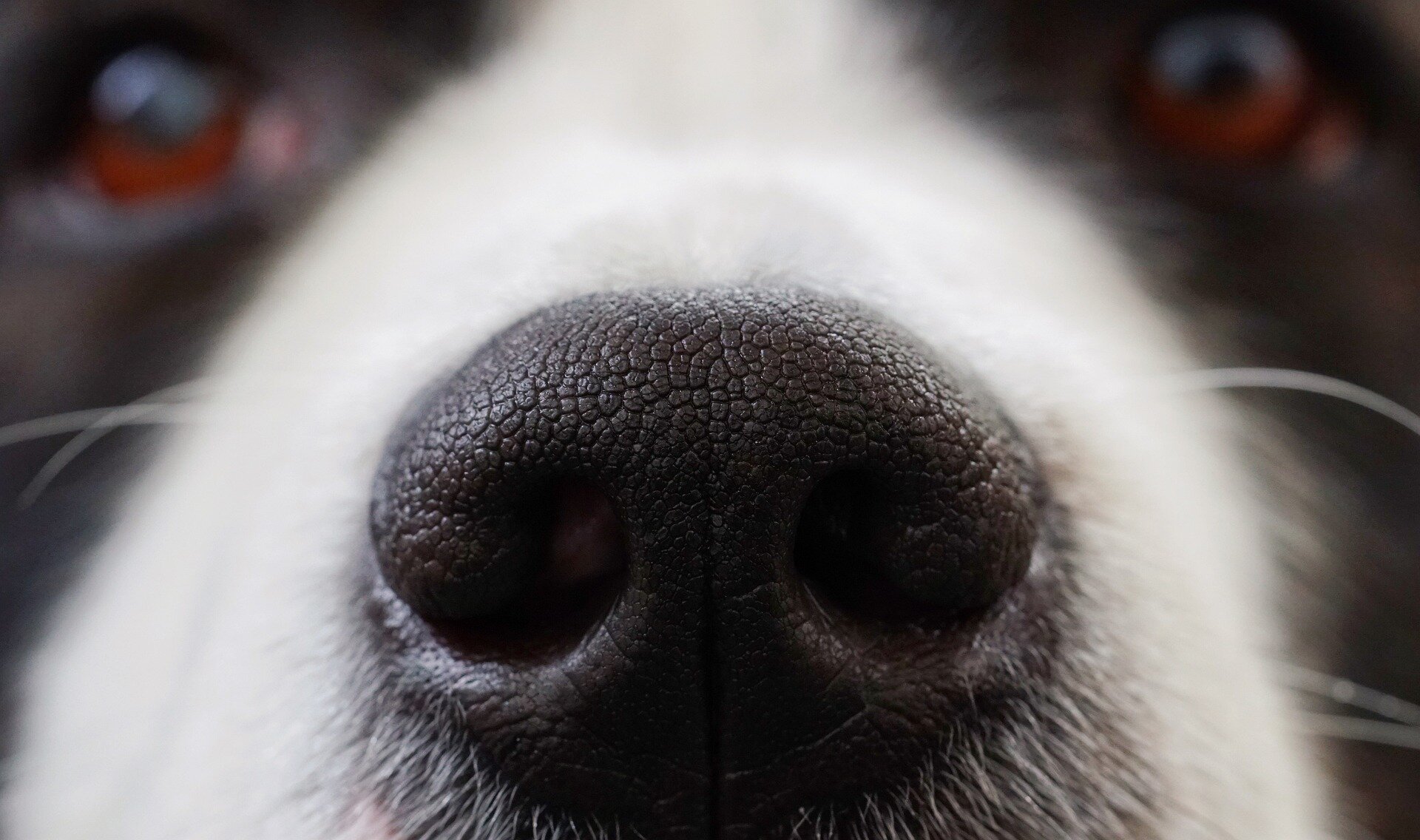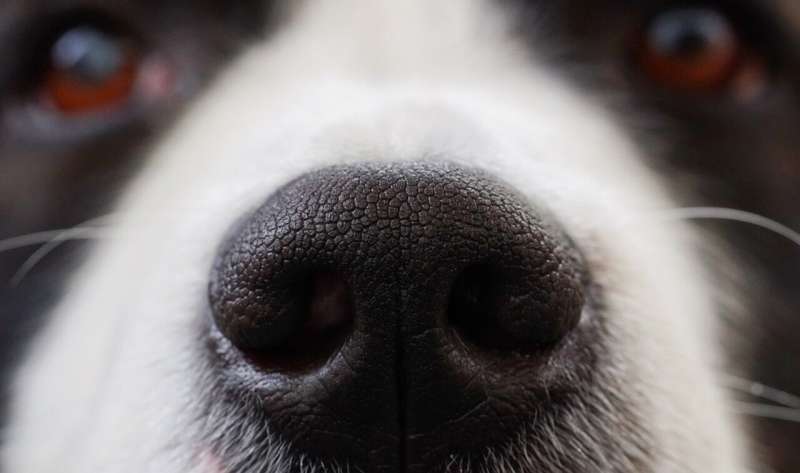

A study carried out by the University of Helsinki’s DogRisk research group, the University of Eastern Finland and Wise Nose–Scent Discrimination Association in Finland investigated the threshold for scent detection in dogs.
The study revealed that dogs can learn to identify concentrations of eucalyptus hydrolate that are clearly below the detection threshold of sophisticated analytical instruments used today. The concentrations were also far below previously reported levels. Dogs’ extraordinary sense of smell can be exploited, for example, in search and rescue operations and in medical detection.
The research is published in the journal Animals.
The 15 dogs that participated in the study had different training backgrounds. Some dogs had experience in nose work, which is a hobby and competitive dog sport, while some had been trained to identify diseases, mold or pests.
In the study, the dogs were to differentiate samples containing low concentrations of eucalyptus hydrolate from samples containing only water. The focus was on determining the lowest concentration that the dogs could detect for certain.
The study included three different tests where the concentrations of the hydrolate were diluted gradually until the dogs could no longer identify the scent. This determined the threshold for their scent detection ability.
“The dogs’ scent detection threshold initially varied from 1:10⁴–1:10²³ but narrowed down to 1:10¹⁷–1:10²¹ after a training period. In other words, the dogs needed 1 to 10 molecules per milliliter of water to detect the right sample. For perspective, a single yeast cell contains 42 million molecules,” says the principal investigator of the study, Anna Hielm-Björkman from the University of Helsinki.
In addition, the researchers found that there was great variation between the eucalyptus hydrolate products commonly used in nose work. They analyzed 10 commercial products and detected, for instance, different concentrations of eucalyptol and lower alcohols.
“This explains why many dogs used to commercial eucalyptus hydrolates showed unexpectedly poor results in the study. Their sense of smell is so precise that they did not identify the eucalyptus hydrolate used in the study to be the same substance that they were familiar with.
“This demonstrates the importance of using standardized nose work products in both training and sports competitions,” concludes Visiting Researcher Soile Turunen from the University of Eastern Finland.
More information:
Soile Turunen et al, Scent Detection Threshold of Trained Dogs to Eucalyptus Hydrolat, Animals (2024). DOI: 10.3390/ani14071083
Provided by
University of Helsinki
Citation:
Scent detection dogs discern odor molecules better than previously thought (2024, May 29)
retrieved 29 May 2024
from https://phys.org/news/2024-05-scent-dogs-discern-odor-molecules.html
This document is subject to copyright. Apart from any fair dealing for the purpose of private study or research, no
part may be reproduced without the written permission. The content is provided for information purposes only.

